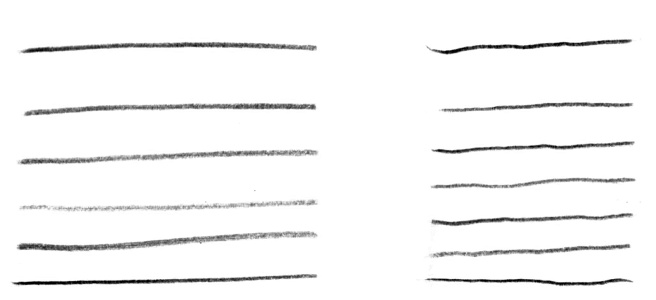Bold lines

There's a paradox when you're drawing straight lines. It might seem like drawing a straight line would be like balancing on one leg: just get really really good at correcting the wobbles until eventually they disappear. But actually it's the opposite; if you draw slowly and deliberately, your line will look like a squiggly mess because of the constant minor corrections.
In fact, the trick to straight lines is to draw quickly, without thinking about them too much. At first, this will look worse, but eventually it improves past the point you could get using the slow and steady method. The reason for this is that you're training a different thing; your hand is learning how to move in a straight line rather than a more complex hand-eye-brain feedback loop. Instead of learning how to correct your mistakes, you're learning how to not make them in the first place.
However, none of that can happen while your real-time feedback mechanism is getting in the way, and I think that's an important lesson in many skills. In singing, beginners often "scoop", singing the wrong note and sliding around until it sounds right, rather than singing the right note to begin with. In writing, the desire to edit your words as you write them makes it harder to learn how to get your thoughts out in one consistent stream.
It's useful to develop your ability to respond quickly to feedback and corrections. However, past a certain point you're just developing your feedback skill at the expense of the real skill. Ultimately, an important part of developing expertise is developing the confidence to act boldly, operating on the assumption of good results rather than bad ones. When that's the case, you can use feedback to inform your practice, but you don't need to rely on it.